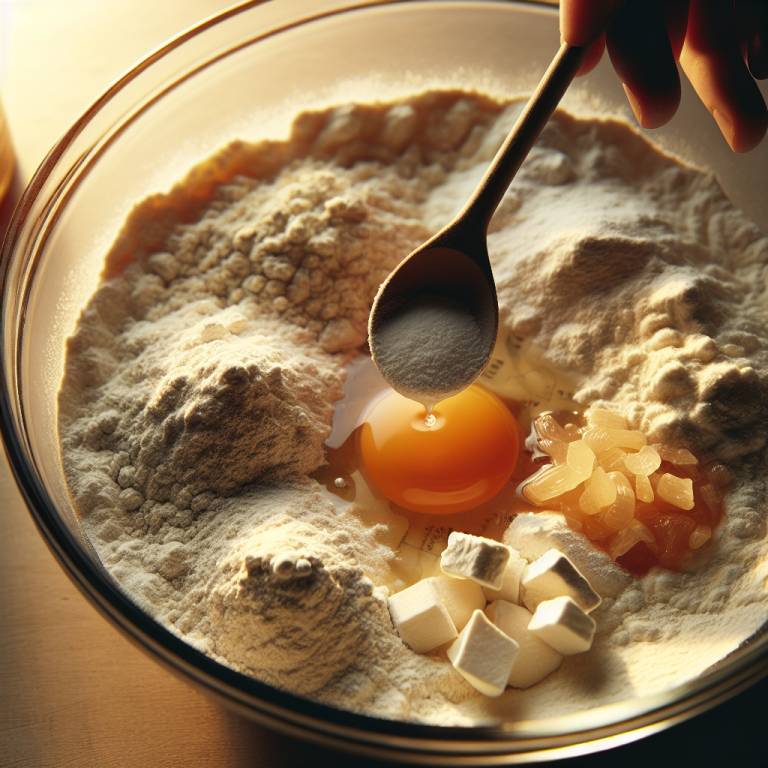Finding the Ideal Water to Flour Ratio for Pizza Dough
The ideal water to flour ratio for pizza dough is around 65-70%. This hydration level creates a dough that’s easy to work with and results in a crispy yet chewy crust after baking. Experiment within this range to find your perfect texture.
Why is the water to flour ratio crucial in pizza dough preparation, and how does it affect dough consistency and handling?
The water to flour ratio in pizza dough preparation is like the secret sauce to making a great pizza. This ratio is super important because it decides how your dough will turn out. If you get it right, you’ll have a dough that’s easy to shape and will bake into the perfect crust. But if it’s off, you might end up with a dough that’s too sticky or too dry, making it hard to work with and not as tasty.
When you mix water and flour, the water starts to activate the gluten in the flour. Gluten is what gives dough its stretch and strength. The right amount of water makes sure the dough is flexible enough to shape but also strong enough to hold onto those lovely air bubbles that make your crust light and airy. Too little water, and your dough will be tough. Too much, and it’ll be a sticky mess. So, getting this balance right is key to a good pizza dough.
What is the ideal hydration level for various pizza styles, from thin crust to deep dish?
Different pizza styles need different hydration levels because they have different needs. For a thin crust pizza, like the kind you might find in a classic New York-style pizzeria, the hydration level is usually around 60% to 65%. This lower hydration keeps the dough easy to handle and roll out thin, leading to that crisp, snappy crust we all love. On the other hand, a deep dish pizza, like the famous Chicago-style, needs a higher hydration level, around 70% to 75%, because the dough has to be more tender and able to hold up to all those toppings and sauce.
Then there’s Neapolitan pizza, which is cooked super fast in a blazing hot oven. For this style, hydration levels can go even higher, up to 80%. This high hydration helps create those beautiful, charred bubbles in the crust. Each style has its own ideal hydration level that helps achieve the perfect texture and flavor. So, knowing what kind of pizza you want to make is the first step in figuring out how much water to use.

Pexels @Evgeniya Davydova
How can adjustments in hydration contribute to the development of the dough’s gluten network and texture?
Adjusting the hydration level of your pizza dough is like tuning a guitar. Just as the right tuning can make a guitar sound beautiful, the right hydration can make your dough just perfect. When you increase the water content, the gluten proteins in the flour can move and align more easily. This alignment is what forms the gluten network, which is crucial for the dough’s elasticity and strength. A well-developed gluten network means your dough can stretch without tearing, trapping air and creating a light, airy texture in your crust.
On the flip side, if the dough is too dry, the gluten network can’t form properly, making the dough tough and hard to shape. By playing around with the hydration level, you can control the dough’s texture, from chewy and dense to light and airy. It’s all about finding that sweet spot where the gluten network is strong enough to trap air but not so tight that it makes the dough tough.
What techniques can be used to accurately measure and adjust the water to flour ratio?
Getting the water to flour ratio just right starts with accurate measurement. One of the best ways to do this is by using a kitchen scale. Measuring by weight is way more precise than measuring by volume because flour can get packed down or fluffed up, changing how much you’re actually using. A scale takes all the guesswork out, letting you get the exact amounts of flour and water every time. This is super important for consistency, especially if you’re trying to replicate a specific style of pizza.
Another technique is to start with the flour and then add water gradually until the dough feels right. This method requires a bit more experience because you have to know how the dough should feel when it’s at the right hydration level. But it allows you to adjust on the fly, which can be handy if you’re dealing with different types of flour or if the humidity in your kitchen changes. By combining precise measurement with a bit of hands-on adjustment, you can dial in the perfect water to flour ratio for your pizza dough.
| Water (ml) | Flour (g) | Ratio |
|---|---|---|
| 250 | 400 | 62.5% |
| 275 | 400 | 68.75% |
| 300 | 400 | 75% |
| 325 | 400 | 81.25% |
| 350 | 400 | 87.5% |
How do factors like flour type, ambient humidity, and desired dough characteristics influence hydration levels?
When you’re making pizza dough, the type of flour you use is super important. For example, if you pick a high-protein flour like bread flour, it can soak up more water than all-purpose flour. This means you might need to add more water to get the dough just right. I remember when I first switched to using bread flour, my dough was way too dry because I didn’t add enough water. It was a real learning moment for me.
Another thing to think about is the weather. On a humid day, the air is full of water, and your flour can actually grab some of that moisture. This might mean you need less water in your dough. On the flip side, if it’s super dry, you might need to add more water. And let’s not forget about what you want your pizza to be like. If you dream of a chewy crust, you’ll want your dough a bit wetter. It’s all about playing with the water amount until you find what works for you.

What are some signs that pizza dough has reached the optimal hydration, and how can adjustments be made if necessary?
Knowing when your dough is just right can be tricky, but there are a few signs to look out for. First, the dough should feel soft but not sticky. It should be easy to shape but still hold its form. If you poke it, the dough should bounce back slowly. If it’s too sticky, that means there’s too much water. You can fix this by adding a little more flour. But go slow, you don’t want to add too much and make it too dry.
If your dough feels really tough and it’s hard to stretch, it might not have enough water. When this happened to me, I learned to add water a little bit at a time until it felt right. It’s all about balance. You might not get it perfect on the first try, but that’s okay. Making pizza dough is a bit like an experiment. Each time you try, you learn something new.
How do professional pizza makers determine and maintain consistent hydration ratios in their dough recipes?
Professional pizza makers have a few tricks up their sleeves to keep their dough consistent. They often use a scale to measure their ingredients exactly. This way, they know the exact amount of water and flour they’re using every time. They also keep notes on the weather and how it affects their dough. This helps them adjust the water amount based on whether it’s a dry or humid day. I once visited a pizzeria where the chef had a whole journal just for dough notes!
Another thing pros do is they stick to the same flour brand and type. This helps because different flours can act differently. By using the same one, they know exactly how it will react with water. They also pay close attention to the dough’s texture and how it feels when they’re kneading it. This hands-on experience helps them know if they need to tweak the recipe. It’s really about paying attention and knowing your dough.
What are some tips for home bakers to achieve the perfect dough consistency through hydration control?
If you’re making pizza dough at home and want to get it just right, start by using a scale. Measuring your flour and water by weight is way more accurate than using cups. This small step can make a big difference in getting your dough to the perfect consistency. Also, don’t be afraid to adjust. If your dough feels too wet or dry, it’s okay to add a little more flour or water. Just do it slowly, so you don’t go too far in one direction.
Keep an eye on the weather and think about how it might affect your dough. If it’s a really humid day, you might not need as much water. And remember, practice makes perfect. The more you make pizza dough, the better you’ll get at knowing what it needs. I’ve made lots of pizza doughs, and each time I learn something new. So, keep trying, and don’t get discouraged if it’s not perfect right away. Making great pizza dough is a journey, and it’s a tasty one at that!
Final Thoughts
Experimenting with different water to flour ratios in pizza dough can lead to finding the perfect balance for your desired crust texture and flavor.
- The ideal water to flour ratio for pizza dough is typically around 60-65% hydration.
- Higher hydration levels, around 70-75%, can result in a more airy and chewy crust.
- Lower hydration levels, around 55-60%, can lead to a denser and crispier crust.
- Adjusting the water to flour ratio can also depend on factors like the type of flour used and the desired baking method.
- Experimenting with different ratios and techniques is key to finding the perfect pizza dough consistency for your preferences.






